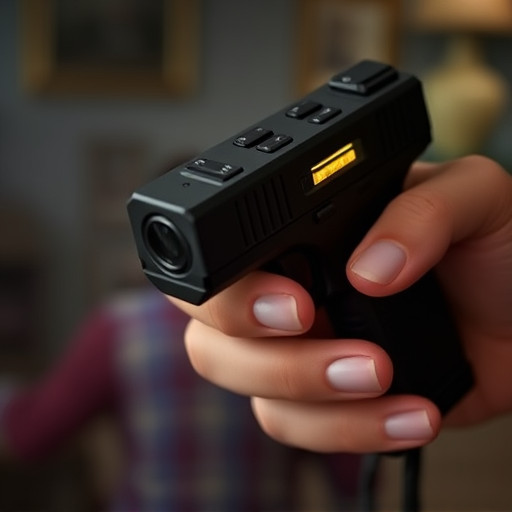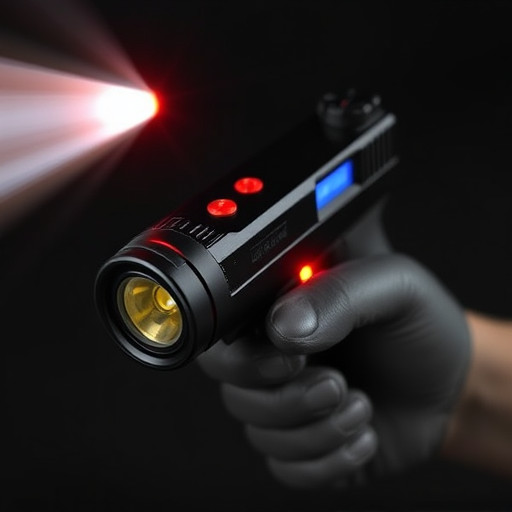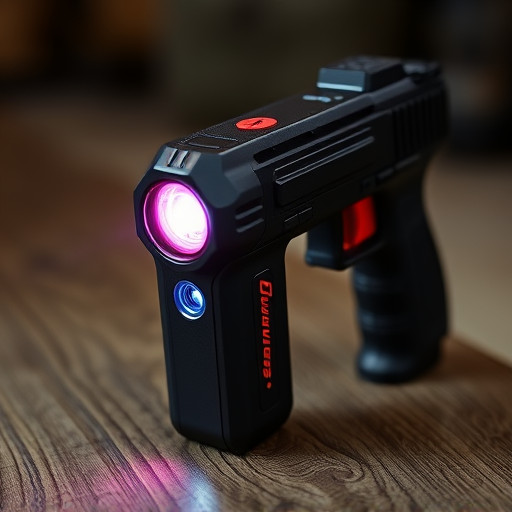Slider stun guns, with adjustable intensity levels, offer personalized non-lethal protection. Their effectiveness hinges on voltage, current output, durable electrodes, and smooth deployment mechanisms. Users can select appropriate force levels based on threat size and legal limits, balancing power and battery life for diverse self-defense scenarios.
Are you seeking an effective personal safety solution? Stun guns, also known as electronic control devices (ECDs), offer a non-lethal way to deter attacks. Understanding stopping power ratings is crucial when choosing the right slider stun gun. This comprehensive guide delves into the factors influencing their performance and helps you navigate the options available in today’s market. By the end, you’ll be equipped with knowledge to make an informed decision for your safety.
- Understanding Stun Gun Stopping Power Ratings
- Factors Influencing Slider Stun Gun Performance
- Choosing the Right Stun Gun for Personal Safety
Understanding Stun Gun Stopping Power Ratings

Stun guns, also known as electroshock weapons, have gained popularity for personal protection due to their non-lethal stopping power. Stopping power ratings are an essential aspect to understand when evaluating a stun gun’s effectiveness. These ratings measure the force and energy delivered by the device to temporarily incapacitate a target, making it crucial for self-defense scenarios.
The rating typically refers to the joules of electrical energy emitted by the stun gun. Higher ratings indicate more power, which can translate to faster muscle spasms and a quicker knockdown effect. For instance, a slider stun gun, where the user adjusts the intensity level, often has varying stopping power ratings. This allows users to choose the appropriate setting based on the threat level and legal considerations, ensuring they have the right balance of force for specific situations.
Factors Influencing Slider Stun Gun Performance

The performance of a slider stun gun, like any other electromotional weapon, is influenced by several key factors. One of the primary considerations is the stun gun’s current and voltage output. Higher amperage delivers more intense shocks, ensuring quicker incapacitation. However, excessive voltage can lead to collateral damage or even pose safety risks if not properly controlled.
Another critical aspect is the contact area and durability of the stun gun’s electrodes. Larger surface areas make for more effective energy transfer, while durable electrodes ensure consistent performance over time. The design and quality of the slider mechanism itself also play a significant role in delivering a reliable jolt. A well-constructed slider ensures smooth deployment and consistent contact, maximizing the stun gun’s stopping power.
Choosing the Right Stun Gun for Personal Safety

When it comes to personal safety, selecting the right stun gun is paramount, and a popular choice among users is the slider stun gun. These devices offer a unique advantage with their adjustable settings, allowing individuals to customize the level of force they need in any given situation. Whether you’re looking for a powerful shock to incapacitate an assailant or a more subtle setting for self-defense against smaller threats, a slider stun gun provides versatility.
The key is understanding your personal safety needs and choosing a stun gun that aligns with them. Factors like voltage, weight, and the ease of use are essential considerations. A slider stun gun’s ability to adjust output levels means you can opt for a stronger shock when facing larger or more aggressive attackers while preserving battery life for longer-term self-defense scenarios.
Stun guns, or slider stun guns, offer a non-lethal self-defense option, and understanding their stopping power ratings is crucial. By considering factors like voltage, current, pulse width, and body area targeted, users can make informed decisions when choosing the right stun gun for personal safety. Researching different models and brands ensures you select a reliable device with high performance and effectiveness, providing peace of mind in potentially dangerous situations.
